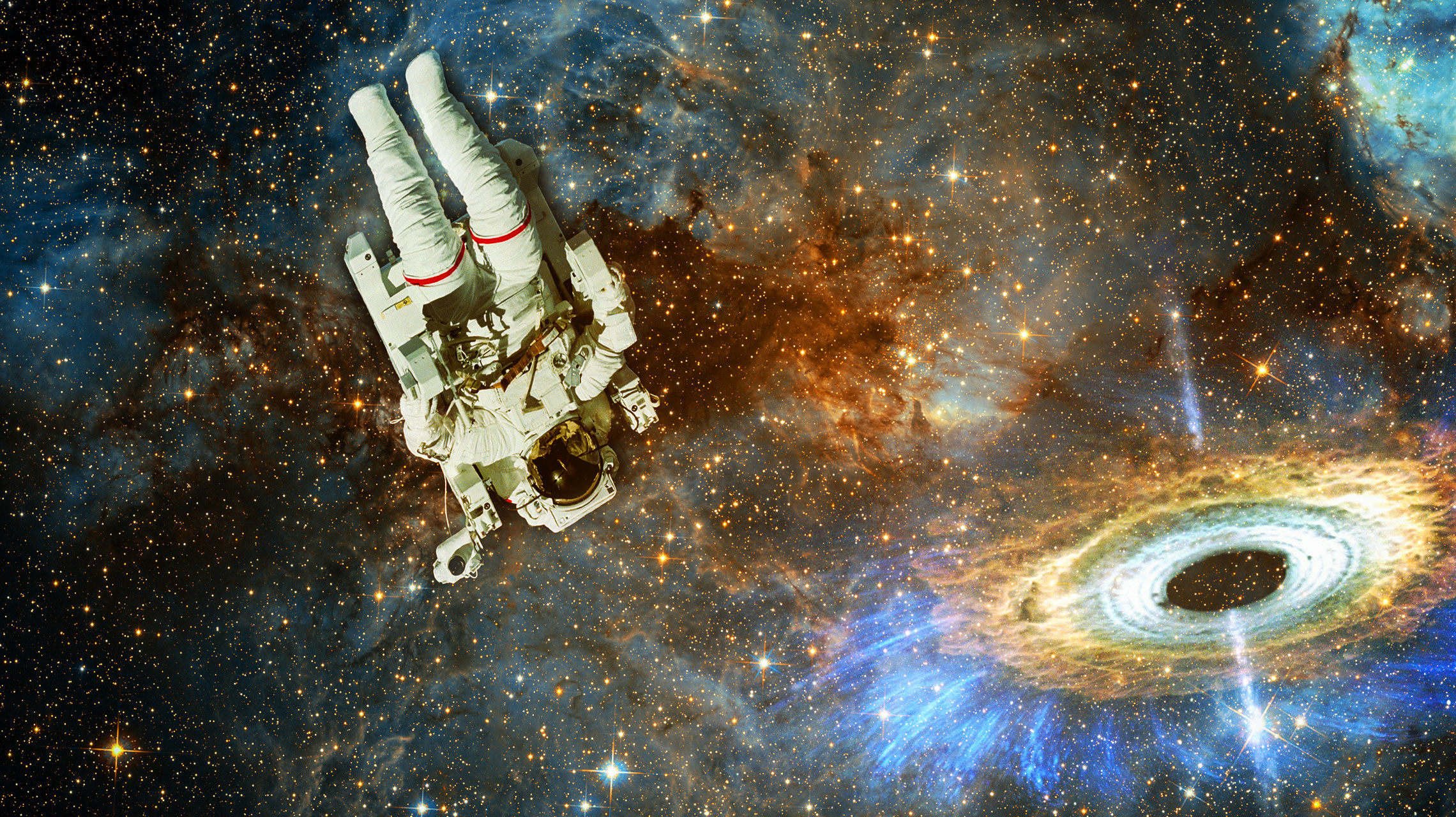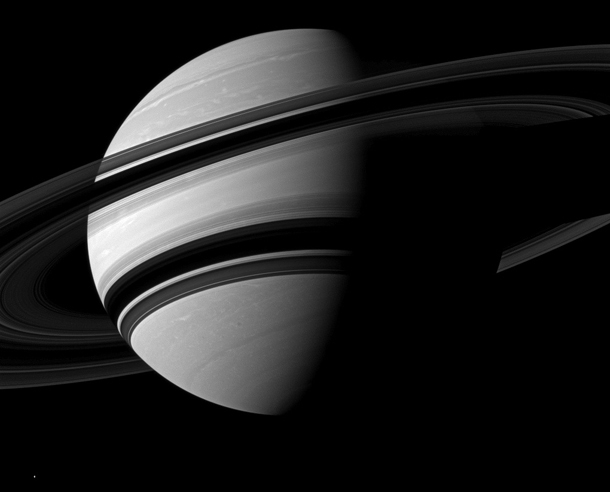Create a free profile to get unlimited access to exclusive videos, sweepstakes, and more!
Angling in on Saturn

Pretty much every picture of Saturn sent back home from the Cassini spacecraft is devastatingly gorgeous, but it's confession time: I prefer the greyscale ones to the pictures in color.
Why? Because this:
Holy ringed gas giant awesomeness! [Click to encronosenate.]
This shot was taken earlier this year, in June, when Cassini was about 3 million kilometers from the planet. Saturn has a thick haze above its cloud tops, obscuring much of the details of the clouds below (one of the main reasons it doesn't sport the same spectacular cloud bands as its big brother Jupiter), but this image was taken using a near-infrared filter - just outside the normal range of human vision (centered at 752 nanometers, for those who want details) - that can see some light that gets through the haze. The white spots and elongated features are the tops of clouds of ammonia, some of which are thousands and even tens of thousands of kilometers long.
I love the angle on this picture. Cassini was south of Saturn's equator, looking north. The northern hemisphere of the planet is edging toward summer right now, so the Sun is shining down on the rings, projecting their shadow on the southern hemisphere. We see the rings here from the unlit side, so they look a bit darker than you might be used to. However, since they're made almost entirely of water ice, they're transparent and scatter sunlight, so you can see them even from their shadowed side.
As a bonus, you can also see the tiny moon Enceladus on the lower left. Of course, when I say "tiny", I mean the size of my home state of Colorado.
This picture is jaw-droppingly beautiful, and I think a big part of that is that it's greyscale (what some people call "black and white", which isn't accurate since we see lots of shades of grey). While color images can be stunning, there is something about the contrast and chocolaty smoothness of greyscale that makes pictures like this more magnificent, more dramatic, and more brooding. I don't know what it is - it's the same phenomenon that happens with old movies, too - but for me it's certainly a powerful effect.
As if Saturn needs any help.
Image credit: NASA/JPL-Caltech/Space Science Institute
Related Posts:
- The scale of Saturn (and The Scale of Saturn, redux)
- Ice moon, ghost moon
- Saturn broods while a storm dissipates
- A shadow falls on the ice geysers of Enceladus



























